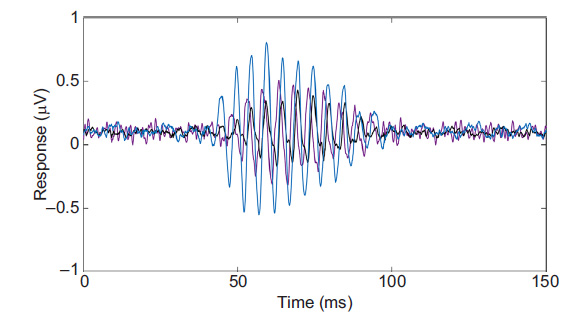Sound detection by the American lobster (Homarus americanus)
Abstract
Although many crustaceans produce sounds, their hearing abilities and mechanisms are poorly understood, leaving uncertainties regarding whether or how these animals use sound for acoustic communication. Marine invertebrates lack gas-filled organs required for sound pressure detection, but some of them are known to be sensitive to particle motion. Here, we examined whether the American lobster (Homarus americanus) could detect sound and subsequently sought to discern the auditory mechanisms. Acoustic stimuli responses were measured using auditory evoked potential (AEP) methods. Neurophysiological responses were obtained from the brain using tone pips between 80 and 250 Hz, with best sensitivity at 80–120 Hz. There were no significant differences between the auditory thresholds of males and females. Repeated controls (recordings from deceased lobsters, moving electrodes away from the brain and reducing seawater temperature) indicated the evoked potentials’ neuronal origin. In addition, AEP responses were similar before and after antennules (including statocysts) were ablated, demonstrating that the statocysts, a long-proposed auditory structure in crustaceans, are not the sensory organs responsible for lobster sound detection. However, AEPs could be eliminated (or highly reduced) after immobilizing hairfans, which cover much of lobster bodies. These results suggest that these external cuticular hairs are likely to be responsible for sound detection, and imply that hearing is mechanistically possible in a wider array of invertebrates than previously considered. Because the lobsters’ hearing range encompasses the fundamental frequency of their buzzing sounds, it is likely that they use sound for intraspecific communication, broadening our understanding of the sensory ecology of this commercially vital species. The lobsters’ low-frequency acoustic sensitivity also underscores clear concerns about the potential impacts of anthropogenic noise.

Fig. 5. AEP responses from H. americanus to acoustic stimuli similar to the buzzing sounds they are known to produce. AEP responses from three lobsters (blue, purple and black curves) are shown.
Reference
Youenn Jézéquel, Ian T. Jones, Julien Bonnel, Laurent Chauvaud, Jelle Atema, T. Aran Mooney.Sound detection by the American lobster (Homarus americanus). Journal of Experimental Biology 2021 224: jeb240747. doi: 10.1242/jeb.240747 Published 25 March 2021
https://jeb.biologists.org/content/224/6/jeb240747





